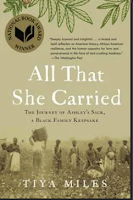"The best thing for being sad," replied Merlyn, beginning to puff and blow, "is to learn something.
That is the only thing that never fails."
~The Once and Future King
Quilting
So far DS1 hasn't said much about wanting a quilt jacket, too. Just a few comments I'm not taking that seriously. But he admired the Arkansas quilts I'd made for his friends' babies. Recently I realized a 3x3 grid {instead of 2x2} would make the quilt almost lap size. Besides being my favorite colors, red and white are both Valentine and Arkansas colors. Sending him a secret hug whenever he uses it.
What words? How about Woo Pig Sooie. However, instead of setting the -ooie as a four patch as I did here, I shrunk the width by half. Now the letters fit the available space.
An "I" on its side looks like an H. Worrying about this, I shortened the bars at the top and bottom. Bad idea. {To me} the fun of this style is the ambiguous visibility of the letters. That "I" stands screaming, "Look at me!" So I unsewed the center and lengthened the bars. Compare the top and bottom photos to see what you think.
Next up are the borders. Here are a couple of fabric combinations I'm considering.
I'd like to gift the quilt for his birthday but his dog loves to eat quilts so this may be one he visits at my house until…
FUR (Fabric Use Rate)
I used 9.5 yards this month and so 9.5 yards this year. Woo hoo.
Reading
When an enslaved woman named Rose discovered her nine-year-old daughter, Ashley, was to be sold she quickly made her a sack holding a dress, a handful of pecans, and a braid of Rose's hair. The sack was passed to family members for a few generations and inscribed with the family's tale in the early 1900s. Eventually it was purchased at a Tennessee flea market and sold to Middleton Place, a museum on the grounds of the former plantation where Rose was enslaved. Currently the sack is displayed at the National Museum of African American History and Culture.
Historian Tiya Alicia Miles researched the women through the few existing written records then used art, objects, and the environment to reconstruct a personal history of slavery, resilience, and love. NPR had an excellent episode with the author.


